Milford Sound History Facts and Timeline
(Milford Sound, South Island, New Zealand)
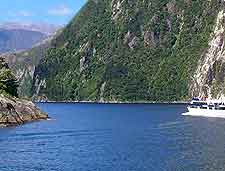
The town of Milford Sound resides on the south-west coast of New Zealand's South Island. Whilst it may have just 150 permanent residents, the history of its surrounding namesake fjord is fascinating nonetheless.
This constantly changing landscape was buried entirely beneath water some 50 million years ago and remains among the world's wettest areas. With nearly one million annual visitors, Milford Sound and its surrounding Fiordland National Park now rank amongst New Zealand's most popular tourist destinations.
Maori Discovery
The Maoris, who first set eyes on Milford Sound approximately 1,000 years ago, believed that their demi-god Tuterakiwhanoa carved out the Fiordland's rugged landscape and jagged mountains. Scientists, however, state that the region's breathtaking landscape was carved from retreating glaciers when the last ice age ended. Milford Sound's original Maori name was 'Piopiotahi', gained after a 'piopio' bird (New Zealand thrush) flew to the Sound to mourn Maori god Maui, who apparently died trying to become immortal.
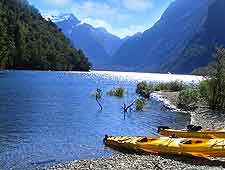
History of European Sealers and Whalers
In 1773, Captain James Cook established a Dusky Sound camp among the Maori, who were invited aboard Cook's ship during his five-week stay. One of Cook's shipmates returned to Milford Sound to establish a sealing colony and erect the first colonial building in New Zealand, in the year of 1791.
Three decades later, all of the area's fur seals had been slaughtered and following a similar story with the local whaling industry, the Europeans largely abandoned the region. The Maori followed suit after warfare between two tribal groups, except for a handful of survivors who were often referred to as the 'Lost Tribe.'
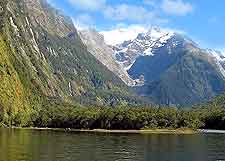
The Hermit of Milford Sound
Scotsman Donald Sutherland arrived in Milford Sound in 1877 and became the region's most famous resident during his 40 year stay in the Fjordland. Sutherland's dog was his only companion for two entire years in this wilderness, earning Sutherland the nickname of 'The Hermit of Milford Sound.'
Sutherland married in 1890 and the couple opened one of the town's first hotels. During his time as a hotelier, he enjoyed regaling his guests with fascinating tales of mythical sea creatures and hidden treasure.
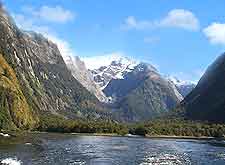
Gold Rush and Tourist Rush
In 1886, a gold rush helped Milford Sound enjoy its most rapid population growth.
Although as many as 200 fortune-seeking people briefly settled in the area in search of gold, less than ten people remained a year later, when the local gold rush ended as abruptly as it began. After failed oil digging and mining attempts, Milford Sound once again became prosperous as a thriving timber and tourism town.
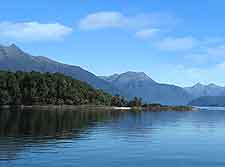
From the 1960s onwards, when flying became affordable for all and long-haul flights gradually opened up this isolated country to tourism, the region's fortunes changed dramatically. The spectacularly located
Queenstown, set on the shores of Lake Wakatipu, soon became a tourist magnet. Aside from its own mining history, the town boasts activities such as skiing, boating, bungee jumping and endless trekking.
From Queenstown, perhaps the most important 'must do' excursion is a trip to Milford Sound, with this journey taking around four hours. Bus loads of tourists soon began to arrive, particularly the Japanese, who marvelled at the Sound and the surrounding topography of the Fiordland's lengthy history, formed over literally millions of years.
 The town of Milford Sound resides on the south-west coast of New Zealand's South Island. Whilst it may have just 150 permanent residents, the history of its surrounding namesake fjord is fascinating nonetheless.
The town of Milford Sound resides on the south-west coast of New Zealand's South Island. Whilst it may have just 150 permanent residents, the history of its surrounding namesake fjord is fascinating nonetheless.


 From the 1960s onwards, when flying became affordable for all and long-haul flights gradually opened up this isolated country to tourism, the region's fortunes changed dramatically. The spectacularly located Queenstown, set on the shores of Lake Wakatipu, soon became a tourist magnet. Aside from its own mining history, the town boasts activities such as skiing, boating, bungee jumping and endless trekking.
From the 1960s onwards, when flying became affordable for all and long-haul flights gradually opened up this isolated country to tourism, the region's fortunes changed dramatically. The spectacularly located Queenstown, set on the shores of Lake Wakatipu, soon became a tourist magnet. Aside from its own mining history, the town boasts activities such as skiing, boating, bungee jumping and endless trekking.